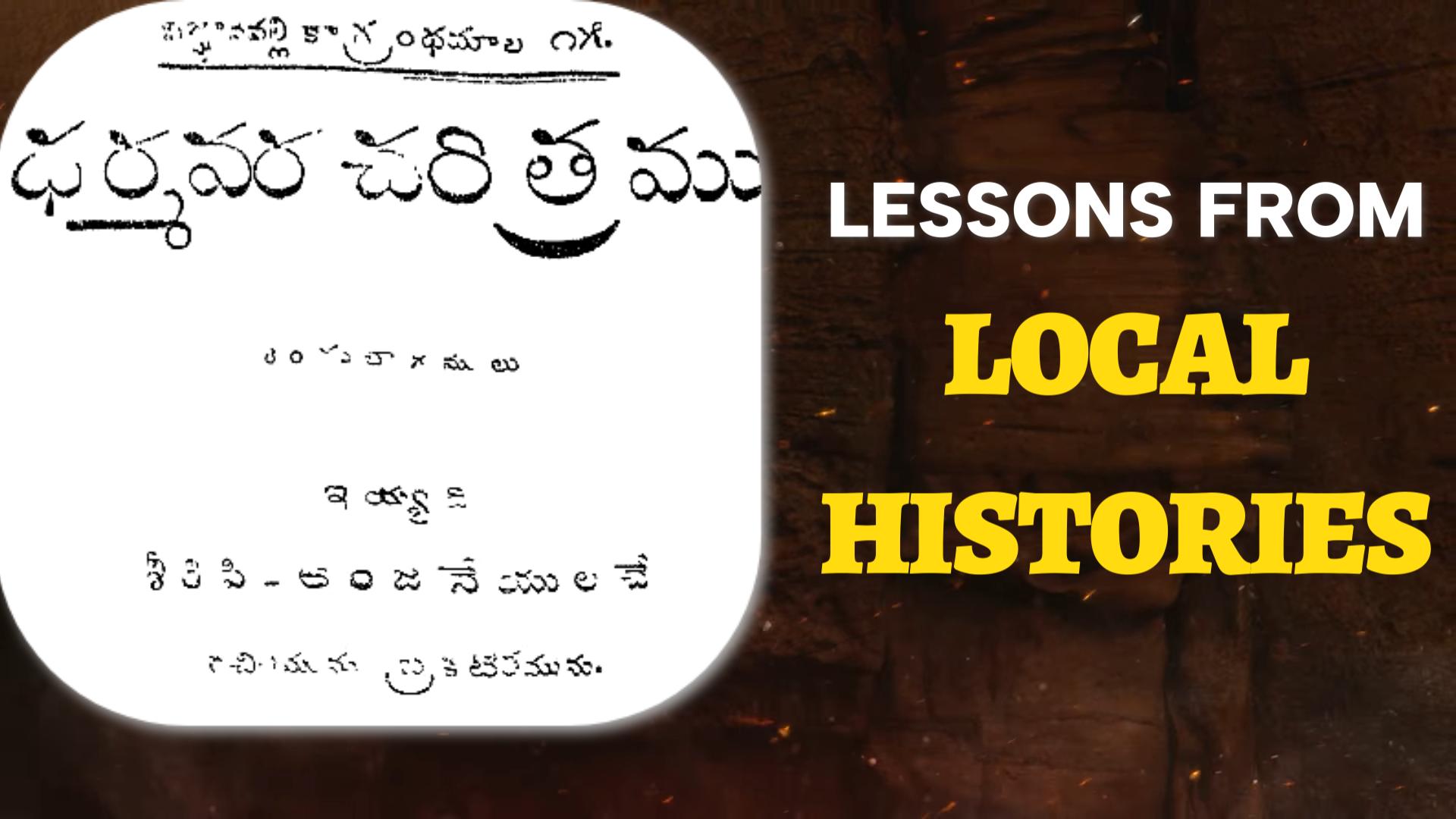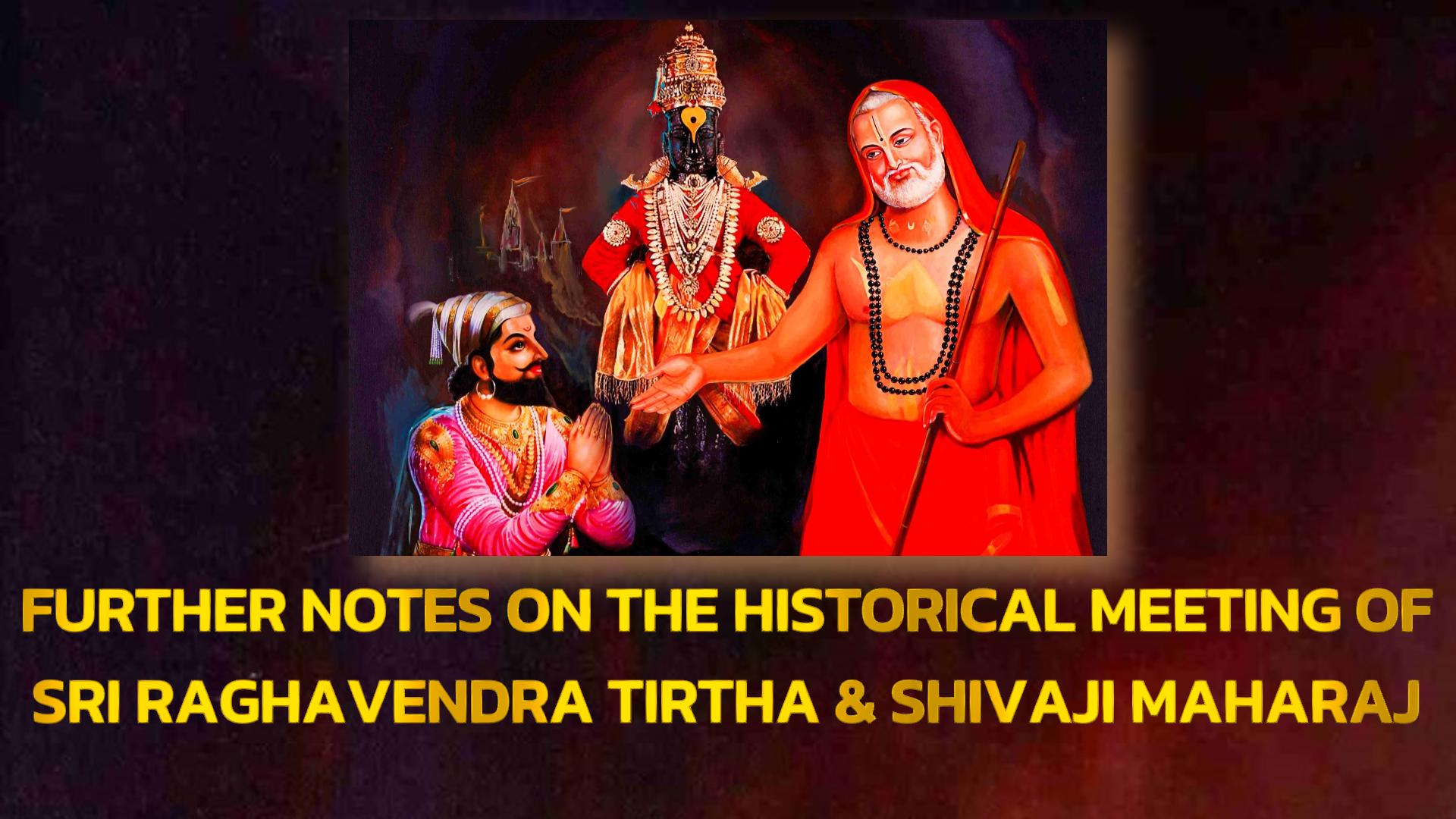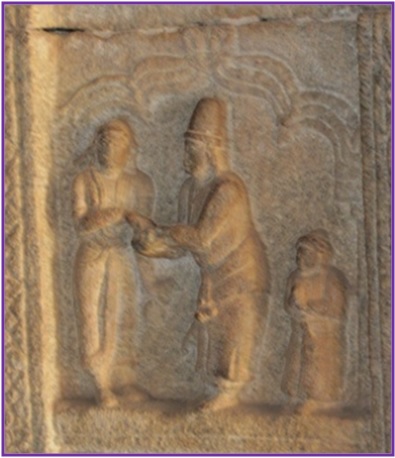SRI VYASATIRTHA’S ASSOCIATION WITH TIRUMALA TEMPLE – REVIEW OF DOUBTS RAISED BY SADHU SUBRAHMANYA SASTRI – PART 2
In the previous article, I have tried to bring forth an important aspect of “reading between the lines” of Krishnadevaraya’s inscription issued to Sri Vyasaraja Tirtha on 12/01/1524 AD (Inscription No. 157 – contents as published in Inscriptions of Krishnaraya 1509-1529 AD by TTD).
As part of the study, I have stated that the confiscation of lands from a Tirumala temple priest by Saluva Narasimharaya should not be treated as a minor incident because such extreme action of land confiscation is totally against the policy held by all the rulers of Vijayanagara Empire.
By continuing the trail of ‘reading-between-the-lines’ of Krishnadevaraya’s inscription, I wish to present the additional inputs on the same.
@@@@@
The peculiar instance of Nambi Sirrappayan’s crime must be investigated thoroughly as it can lead us to draw several useful inferences such as
- the influence of Shrivaishnavites
- the status of Tirumala temple priests in the society
- their proximity to the powerful kings and nobles
- the then material distractions to which the priests could succumb.
In order to study the case of Nambi Sirrappayan, the foremost step that I have taken is to check back the history of Tirumala temple and find the instances of any thefts or misdeeds occurred in the temple.
As part of this exploration, I have come across with a curious illustration of misuse of donor’s funds as early as 13th century.
Hereunder are the details.
THEFTS IN THE PAST
Sri PVRK Prasad (PVRK), a senior most IAS officer from Andhra Pradesh has served as the Executive Officer for Tirumala Tirupati Devasthanams from 1978 to 1982. Coincidentally, PVRK happens to be a devout Maadhva with acumen in data analysis. He wrote couple of books on Tirumala temple and TTD of which a book titled “Tirumala Charitamrutam” is a rich treasure of ancient historical information pertaining to Tirumala temple.
In this book, under a chapter titled “ದೀಪಾಲು ತಗ್ಗಿಂಚಿ, ನೂನೆ ತಾಗೇಸಾರು!” translated as “[by] Reducing Lamps, [they] Drank Oil!”, PVRK mentions about two incidents that have occurred before Vijayanagara Empire came in to existence. One such incident had occurred during the reign of Rajendra Chola (early 11th Century AD). PVRK cites an inscription No. 21 of Tirumala Temple as the source.
According to his narration during the reign of Rajendra Chola there happened an enquiry by an imperial officer named Korramangalam Mugiyan who was an overseer of Thonda Mandala province of Chola empire. This Mugiyan had invited the donors, temple officials, trustees and some devotees and conducted a meeting in which he examined the donations made and the implementation of the requested made by the donors while depositing the donation. He found some errors and identified that the temple staffs have indulged in certain misdeeds such as not lighting the ghee lamps but withdrawing the money under that account. Mugiyan had ordered the officers who violated the norms to repay the money thus siphoned off.
PVRK narrates another incident wherein an enquiry had conducted by a regional officer from Kodupurnad which is part of Tiruvengada Kottam (i.e. Tirumala). In this case, the temple priests were supposed to light 24 ghee lamps in the Sanctum Sanctorum on daily basis but they were lighting only two lamps. The officer found out that the money to be spent for lighting the remaining 22 lamps has been siphoned off by the priests. He then passed a judgment that the Shrivaishnava trustees must pay back the stolen money with penalty and the lamps must be lit as per the donor’s wish.
These two incidents which precede the jewels theft by Nambi Sirrappayan confirm that the some crimes (not of serious types) were happening in Tirumala temple and the priests were found guilty in some of the cases.
It must be remembered here that in the known history of Tirumala temple, more particularly from the times of Ramanuja (1017-1137 AD), Shrivaishnavites alone were/are the priests worshiping the idol of Venkateshwara.
SHRIVAISHNAVAS & THEIR INFLUENCE ON VIJAYANAGARA RULERS
Now it is established that the Tirumala temple, from time to time, was witnessing the misdeeds by priests and temple staffs and the oldest reference for such incidents could be traced back to 11th Century i.e. much before Vijayanagara got established. Hence it would not be an error to say that by the time of Saluva Vira Narasimha Raya (15th century AD) the thefts could have been improvised and even institutionalized!
I am not making this statement without supporting evidence. Sri B. Venkoba Rao in his introduction to Vyasayogi Charitam produces an extraction from Krishnaswamy Aiyangar’s Sources of Vijayanagara (please see below)

(Page v & vi of Introduction to The Life of Sri Vyasaraya by B. Venkoba Rao)
The rough translation of the poem mentioned from Prapannamrita reads as “In the reign of Emperor Virupaksha, the devout Shrivaishnava, all the Shrivaishnavas were just like the Emperor himself (i.e. devout Shrivashnavas). This has been established by the replacement of Virupaksha seal with Sri Rama seal by Virupaksha (the king)”
The emperor Virupaksha mentioned in the above poem is Virupaksha Raya – II who ruled the Vijayanagara Empire from 1465 to 1485 and was subsequently murdered by his own son Praudha Raya in 1485 AD. This Virupaksha Raya took to Shrivaishnavism and as a result of this conversion he has abolished the Shivite “Virupaksha seal” initiated by Harihara and Bukkaraya. In place of this ancient seal, he brought in a new seal of “Sri Rama” and started using it as the royal sign. Such was the power and proximity of Shrivaishnavites with the then ruler of Sangama dynasty.
Saluva Narasimharaya became the Governor of Chandragiri in 1452 AD to which province the Tiruvengada Kottam alias Tirumala village belonged to and he too was a sincere follower of Shrivaishnavism. But he somehow strained his relations with the Tirumala priests during his ascendency to Vijayanagara throne. One reason that could safely be ascribed to this strained relationship is this incidence of theft of temple jewels by Nambi Sirrappayan.
NAMBI SIRRAPPAYAN & HIS TIRUVABHARANA DROHAM
By considering the oldest references of misdeeds committed by priests and staffs of Tirumala temple (ref. PVRK book) and the power wielded by Shrivaishnavites with the then Vijayanagara Empire (ref. Prapannamrita poem) it becomes clear that some of the priests at Tirumala could have outgrown from their capacities and could have become selfish and bullying. They could have indulged in various crimes. Nambi Sirrappayan seems to be one such priest who dared to steal the jewels offered to the God for filling his personal treasury!
Saluva Narasimha who was watching such priests from close quarters for more than two decades might have not acted due to the clout between the emperor and the priests. Soon he became the monarch; Saluva Narasimha might have started cracking the whip against the corrupt priests and temple staff and Nambi Sirrappayan could be one such black sheep that got punished mercilessly.
Once again I wish to quote PVRK’s narrative from Tirumala Charitamrutam wherein in Chapter 51 titled “ದುಷ್ಟಗ್ರಹ ಕೂಟಮಿಲೋ ರಾಜ್ಯಂ ದಾನಂ” (Handing over of the empire during ominous celestial conjunction). In this chapter, he quotes the case of Nambi Siriyappan (Srirappaani) and mentions that he was a “ವಂಶಪಾರಂಪರ್ಯ ಅರ್ಚಕ” i.e. the hereditary priest of Tirumala temple.
Further to this, PVRK says that some historians opine that this hereditary priest was beheaded by the order of Saluva Narasimharaya for his proven charge of stealing god’s ornaments. According to other historians, PVRK mentions, this priest was sent in exile by Saluva Narasimha. Either of these developments have rendered the temple priest-less and thus came in Vyasatirtha who restored the daily rituals and regular worshiping of Venkateshwara for 12 years.
I do not think either of the two conclusions drawn on the fate of Nambi Sirrappayan i.e. beheading and deportation are correct. Saluva Narasimha who himself was a devout Shrivaishnavite could not have committed a heinous crime of beheading a hereditary priest of Tirumala temple. Similarly, when the culprit was sent in exile there was no need for Saluva Narasimha to issue specific orders for confiscation of the land properties belonging to the banished priest.
In my opinion there could have occurred an incident of suicide by the indicted priest. This may sound too farfetched but I do not think that this suggestion is as improbable as the ‘beheading theory’ proposed by some historians!
I wish to narrate the developments as to why Nambi could have committed suicide.
As we have seen in the section “Shrivaishnavas & their influence on Vijayanagara kings” , in line with many Shrivaishnavites who enjoyed the patronage of Virupaksharaya, Nambi being the hereditary priest of famous Tirumala temple too might have cherished the fruits of his close proximity with the emperor.
This closeness and the power vested in him as the hereditary priest of a rich and famous temple could have made him to get involved in ludicrous activities of stealing temple jewels. His stars might have turned dull when Saluva Narasimha rose to power and started tightening the noose around the necks of Nambi and his ilk.
After the implementation of Saluva Narasimha’s order to confiscate his land properties, Nambi could have been left high and dry by his relatives and friends as he has been indicted by none other than the might Emperor himself! In those days when the whims and fancies of the ruler were making the followers to mimic, can anyone would dare to help Nambi only to get whipped by the emperor? I don’t think so.
This social alienation and the loss of reputation along with properties could have left Nambi with one option i.e. to commit suicide. He might have left his family as orphans by committing suicide or he could have made his entire family to face the death! I wish to recall what Sri Raja S. Gururajacharya had narrated in his Kaliyuga Kamadhenu book. Sri Gururajacharya said that Shrivaishnavites of Tirumala have committed suicide up on listening to the news of an army detachment sent by Narasimha raya marching towards Tirumala to arrest them. Either ways, Saluva Narasimha with his stern action against the corrupt has caused a Brahman to embrace an untimely and forcible death. Thus he attracted the sin of killing a Brahman.
Alongside of accruing Brahmahatya, with the demise of hereditary priest, Saluva might have faced another challenge i.e. stoppage of daily rituals at Tirumala temple. As the rules of worship are strict and are difficult to violate, Saluva had to appoint a suitable person to ensure the continuance of daily pujas. Also, he has to scout for a great soul who can bring him up from the abysmal depths of Brahmahatya. And he found the answers for his sufferings in Sri Sripadaraya and Sri Vyasatirtha.
*****
But how he could have come across with these two Vaishnavites whose closeness to Saluva Narasimha has been questioned by Sadhu Subrahmanya Sastri would be dealt with in the next part.
@@@@@




